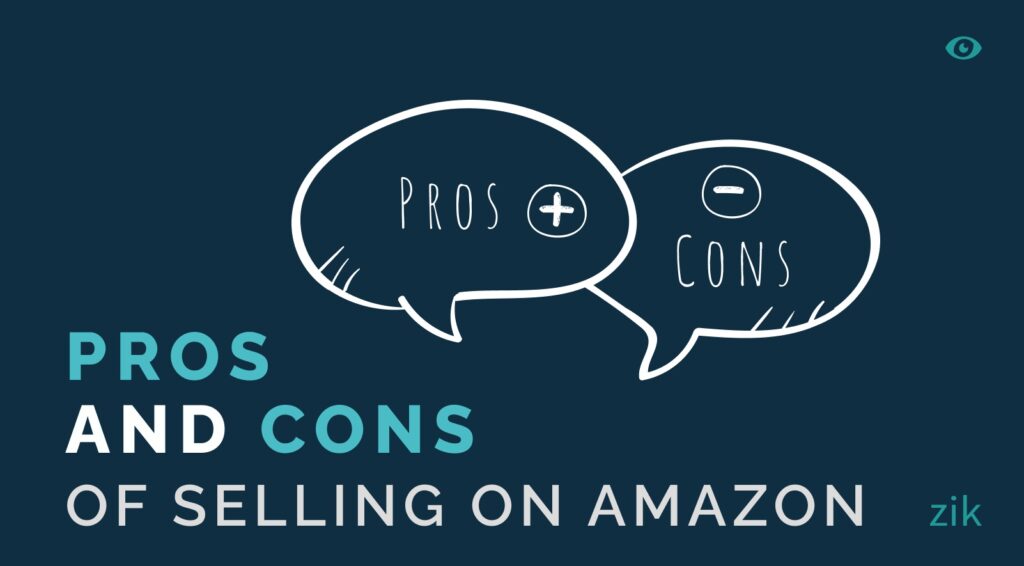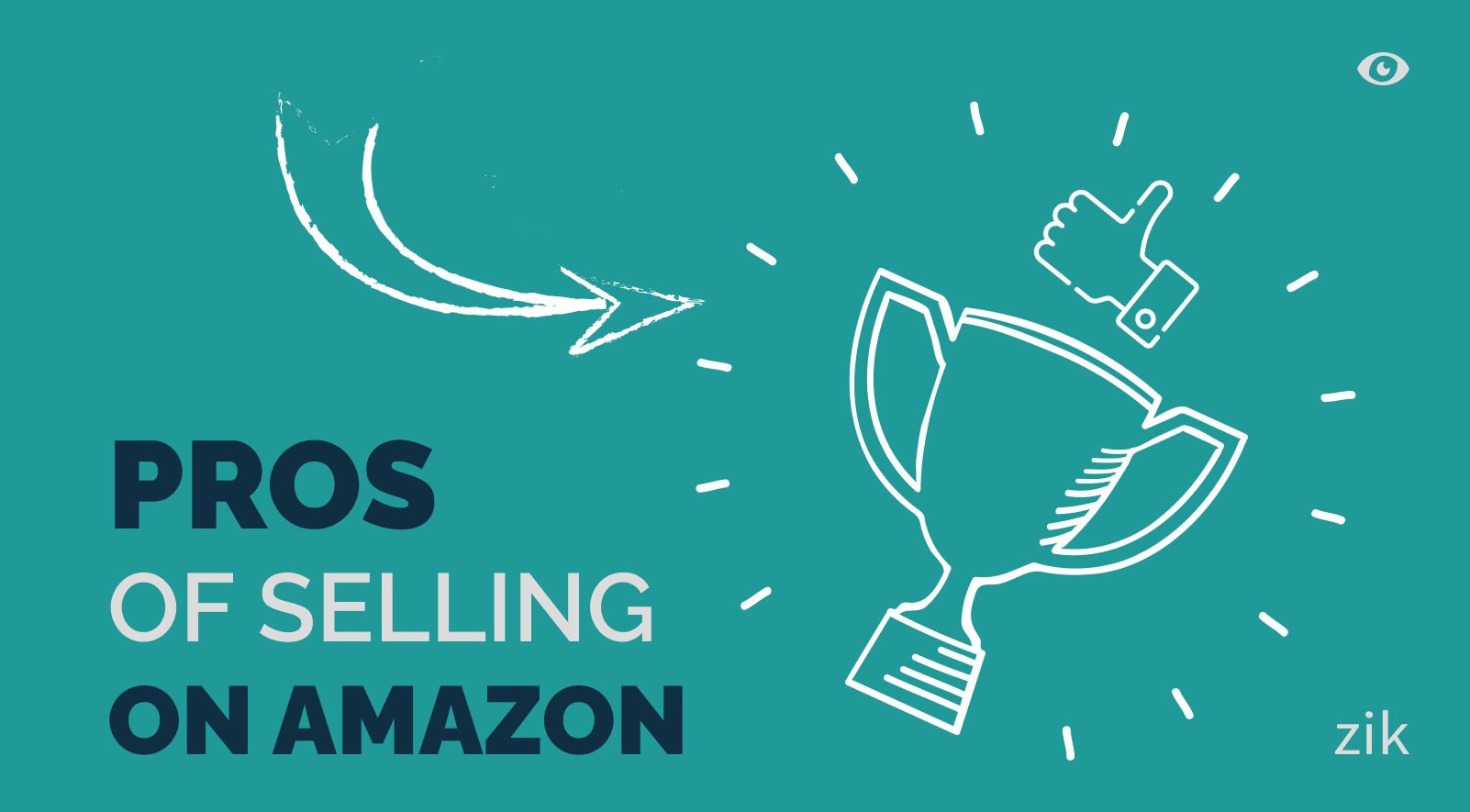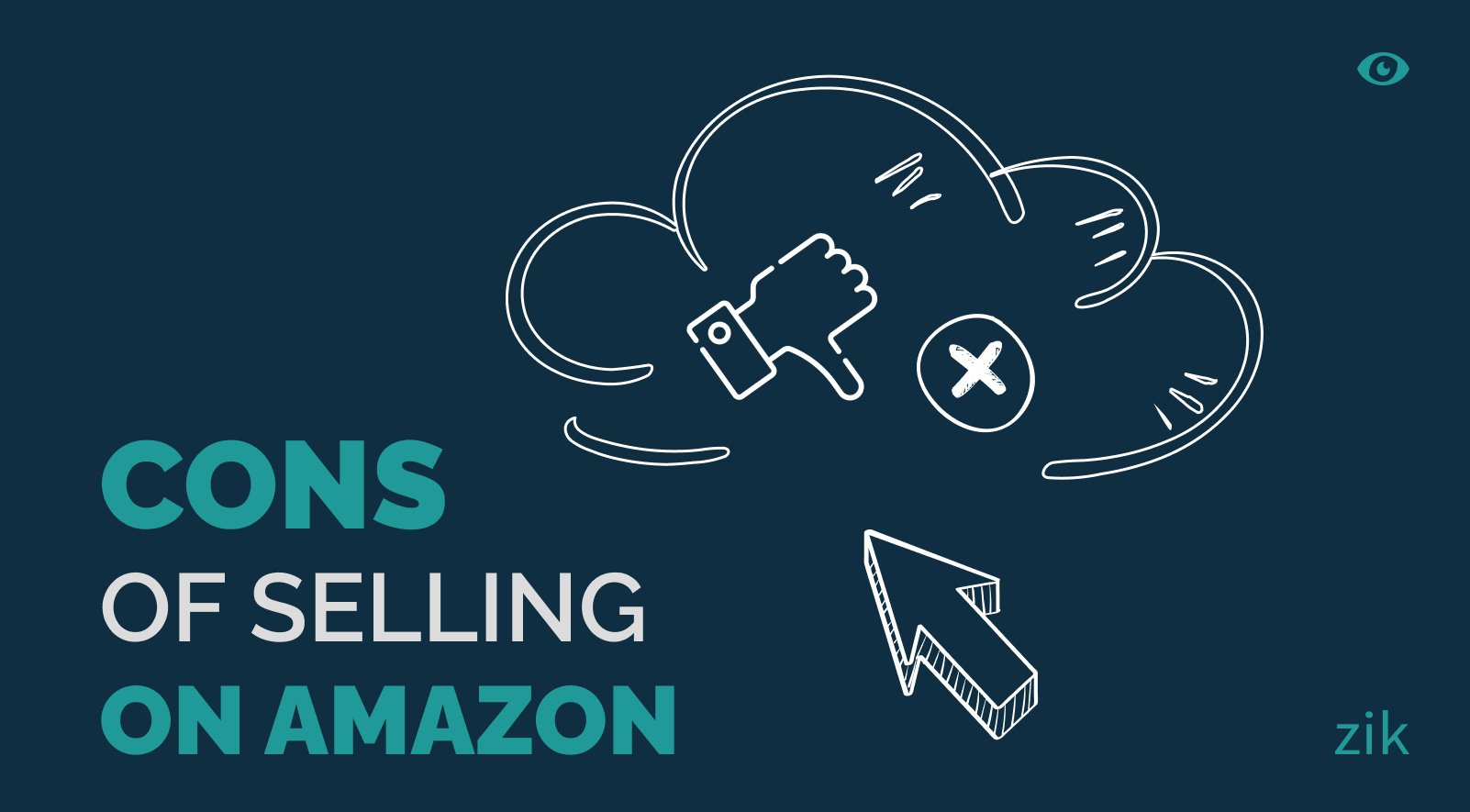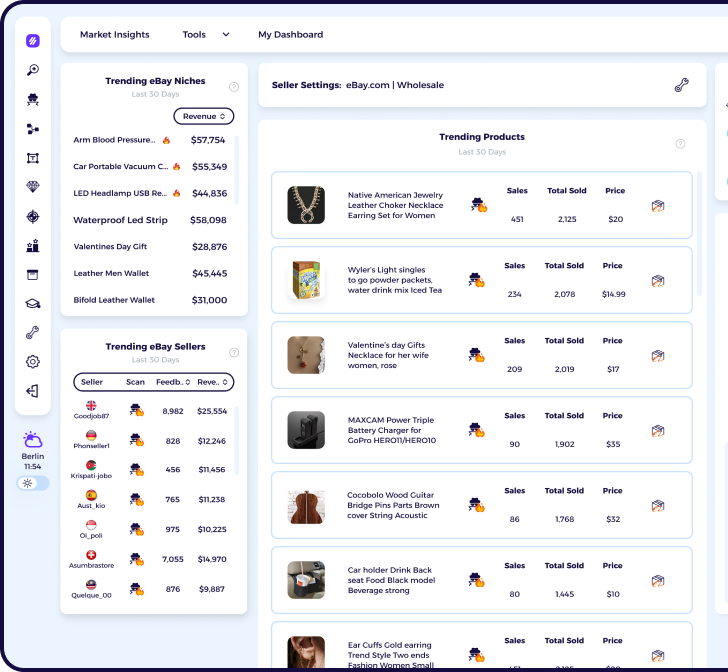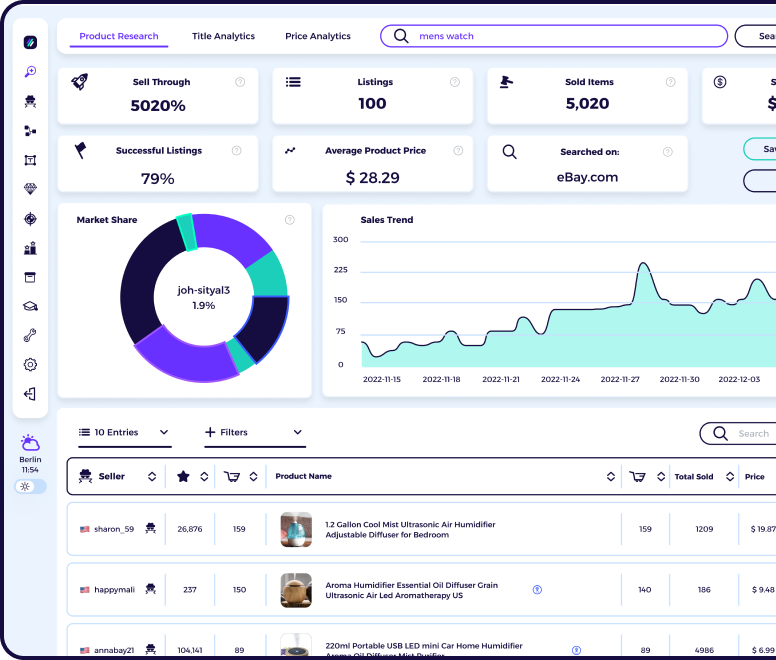Did you know that over a third of product searches online start at Amazon marketplace? If you don’t know yet, Amazon is one of the biggest eCommerce platforms out there – if not the biggest. If you want to start a successful eCommerce business, it only makes sense to choose selling on Amazon so you have the best chance at making more sales.
However, the popularity of selling on Amazon also means that there are more than a million new Amazon sellers that join the platform every year. Is it worth it to be selling products on Amazon? Can you still make money with such a large amount of competition?
This guide is what you need to take a closer look into the pros and cons of selling on Amazon so you can determine if it is the best platform to start selling online, or if the alternatives are a more suitable option.
Pros and Cons of Selling on Amazon
Is it a good business idea to start selling products on Amazon? You might have heard about the staggering numbers and eCommerce sales on these online marketplaces and you wanted to find out for yourself. Before you start selling on Amazon, take time to know about the pros and cons of selling on the website.
Pros of Selling on Amazon
-
Excellent Business Reputation
For many owners of small to medium sized businesses, the opportunity to sell on Amazon is a privilege. This is a global brand with a global audience. There is an excellent brand reputation that comes with selling on Amazon and you can leverage Amazon’s credibility to attract potential customers.
The 2021 global revenue for Amazon was estimated at $221.6 Billion. The revenue is up nearly 35% from the previous year. These numbers indicate that there is a good sales potential with Amazon because of its global customer base and with more people opting to buy from Amazon.
-
Cost Efficient and Low Startup
Another advantage to choosing to sell online and build your Amazon business is the low startup costs. Many aspiring third party sellers on Amazon complain about the marketplace fees and commissions involved with creating a professional plan or sellers account, especially for the commission on every item sold.
However, this cost is nominal compared to the cost of starting your own website and online business. You have to consider the cost of buying your domain name, building your website from scratch, hiring a web designer and graphic designer to set up your website, and the initial cost of finding supplies for your small business. You need to have enough initial inventory and a good inventory management system to ensure that you can accommodate your customer orders. Even if you sell your own products, you have to think about the cost of acquiring supplies, the manpower, and the equipment you need to create those products.
The saturation of websites that sell products that you offer can also make it difficult to generate enough sales. Therefore, you have to hire a marketing team to promote your products online and get enough traffic to your website. Without these components, you won’t be able to make profits to help your business stay afloat.
You can eliminate the hassle of setting up an online business by signing up to an Amazon seller account. You can leverage the popularity of the platform for selling online so you can start selling as soon as your account is set up.
-
Worldwide Shipping
Amazon is one of the top online marketplaces in the world. It has a marketplace for up to 13 countries including the US, the UK, Canada, Spain, France, and more. And yet, this retail giant continues to expand as Amazon is planning to open up new markets.
You can leverage Amazon’s massive logistics network to save on the higher shipping fee of handling your own shipments. When you sell through this sales channel, you will be able to cater to customers from all over the world. Qualified customers cna take advantage of the Amazon prime shipping benefits or those who are from various parts of the world can rely on the reliability of the online retailer giant such that they don’t mind paying more for the shipping.
-
Quality Customer Service
One of the lesser known advantages to selling on Amazon is the ability to use their excellent customer service policy to your advantage. Every business wants to ensure the highest level of customer satisfaction to ensure repeat buyers and consistent flow of sales. Therefore, you can take advantage of the professional customer service from the Amazon employees to provide the adequate support for your customers.
-
Various Selling Models
You can choose different business models when selling on Amazon, which gives you flexibility to choose a model that suits your sales and profit goals.
Dropshipping is one of the most popular methods for selling through this platform. The main advantage of dropshipping is that you don’t have to think about the fulfillment fees and inventory management because you don’t need to have your own inventory. You can sell directly from the supplier and earn a profit for every item sold. The downside to dropshipping is that it is a popular business model, which means there are probably several other Amazon dropshippers selling the same product as you. You need to conduct product research to identify the best products to sell and to price them accordingly.
Another common method of selling products via Amazon is through the Amazon FBA program. This method of selling is available directly from Amazon where you can take advantage of the services from the Amazon employees and its large fulfillment centers to save on storage fees and to maximize the quality customer service offered by the brand.
Cons of Selling on Amazon
-
Competition
Selling with Amazon is going to be very competitive as there are millions of sellers out there who want to make money selling items through the platform. Therefore, you need to invest on product research tools because you want to stand out from the competition by selling products that are unique or you have to deploy a brilliant marketing strategy to make your products stand out.
It is also important to study the pricing strategy of your competition. You want to attract customers to buy from you instead of other sellers with the same product by offering it a much lower price. You can also come up with various promotions such as free shipping and discounts to get people to add your products to their shopping carts.
-
Fees
Another con to selling with Amazon are the marketplace fees involved. When you set up a seller account, you need to pay a percentage of every sale you make to Amazon. These fees can further cause your profit margin to become slimmer and it could take some time before you meet your profit goals.
An individual plan will cost $0.99 per sold product. It is recommended for an online business that sellers no more than 40 items per month. But if you sell more, you can opt for a professional plan that costs $40 per month. This plan is ideal for online business owners that sell large volume of products so you can save on marketplace fees. There is also a referral fee for each item you sell, which varies based on the plan you chose.
-
Inventory Management Issues
There are lots of potential issues you could encounter when selling through Amazon. One of them involves stock issues because the stocks are updated only after the fulfillment of orders for that particular day. Therefore, sellers won’t be able to tell how many products are sold throughout the day and they won’t be able to update their stocks information.
This won’t be an issue for online business owners that sell only through Amazon. It does become an issue when you have to integrate your stock management with other shopping cart systems because there is no way for you to do that. There is a possibility that you could sell more products that the stocks that are available on Amazon. It could lead to poor customer satisfaction level.
-
Limited Branding
It is difficult to establish your own brand when you sell through Amazon because you have to use the company’s brand in packaging and marketing products. You have to utilize whatever features are available through Amazon and also observe the existing Amazon limits. There is a huge focus on products instead of the sellers.
Therefore, it is very rare for you to find private label products on Amazon because it is difficult for sellers to build their brand presence through this online marketplace.
Should You Sell on Amazon?
As the world’s largest eCommerce business platform, the answer is a solid yes.
This online marketplace has grown extensively in the past decade or so. With eCommerce activity continuing to rise, you can expect that the Amazon marketplace will also expand with it. Therefore, you can leverage the success and popularity of the platform by selling on Amazon. It is more cost-efficient than setting up your own online store or own website.
However, there is no denying that there will be challenges to selling on Amazon given the high level of competition. It is a good challenge, though, as you have to be smart when selling products to ensure that you have a competitive advantage over other sellers.
In the end, no business – online or offline – can survive without perseverance, strategic planning, and market research. The amount of work you do offline is equal to, if not more, than what is required to set up your online store in the Amazon marketplace. Therefore, you can do a competitor analysis and market research to determine how you can get a market share for your niche and maximize your profit margins.
If you want to maximize the amount of product sold for your small business, you can choose multiple marketplaces instead of exclusively selling on Amazon. This strategy will help expand your customer base and increase sales from selling goods online.
FAQs on Selling on Amazon
Is selling on Amazon still profitable?
Yes. Amazon sales performance continues to grow on a year-on-year basis. The website generated a total revenue of $469 billion in 2021 alone and nearly 22% of that is from third party sellers.
Amazon’s own data also reveals that 64% of new sellers make profits within a year of selling on Amazon. Make sure you take the time to research on the best products to sell on Amazon so you can increase sales and boost profit margins.
How much does an Amazon seller earns?
The actual earnings vary from one seller to another. However, the average earning for an established Amazon seller could range from $1,000 to $10,000 a month. Take note that this refers to sales and so you have to consider shipping costs, fulfillment fees, and Amazon seller fees when calculating your profits.
What is the most profitable thing to sell on Amazon?
It depends on the season because the demand for a product category could change throughout the year. However, some of the most profitable categories when choosing to sell products include books, electronics, home and garden furniture, beauty products, sports goods, kitchen tools, etc.
Why do sellers leave Amazon?
The primary reason why some Amazon sellers leave this ecommerce platform is because they are too impatient. While the Amazon marketplace is highly in demand, there is a stiff level of competition. These sellers opt to leave their small businesses within the first few months of not hitting their sales or profit targets.
However, you must be patient enough to continue promoting your products and optimizing your product detail page to ensure that you can get more customer orders.
Why do some brands not sell on Amazon?
There are certain drawbacks to selling on Amazon that makes brands consider not to make their products available through the platform. One of these drawbacks is the lack of access to customer data. Third party sellers have very little control of the customer experience and have no means of remarketing to the customers who already purchased from their Amazon business.
Can we sell used products on Amazon?
Yes, you can sell products that are second-hand or used through Amazon website. If you have a seller account, you can list products such as old movies, CDs, DVDs, books, and even electronic devices (like laptops or mobile phones).
When creating your product listings, make sure to add a cheaper price for these items lower than the recommended price for brand new products.
How can I sell on Amazon without stock?
Dropshipping is a popular business model for anyone looking to engage in Amazon selling business without the hassle of maintaining an inventory. The business model works by finding a supplier who will directly supply and ship the products to your new customers. You can earn a profit of the product that you sell on Amazon.
Do you have to pay $40 to sell on Amazon?
Creating an individual account is free on Amazon. However, you will pay a commission of $0.99 for every sale that you can produce on your online store. This fee is just one of many other fee that comes when you generate eCommerce sales via Amazon selling.
How long does it take to set up an Amazon store?
Setting up your Amazon sellers account is easy so you can begin selling on Amazon. It takes only a few steps and is a pretty straightforward process.
Once you have created an Amazon sellers account, you can choose a template for your homepage. After that, you can add your product listings and product descriptions. You can submit your listings for Amazon to review. The review process usually takes two to four days before approval.
